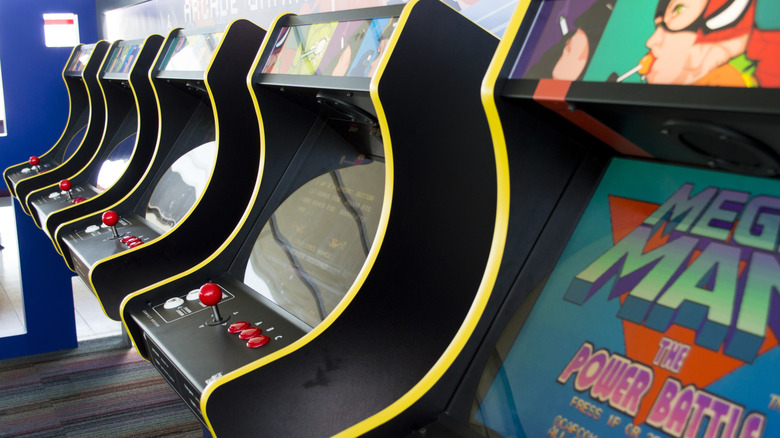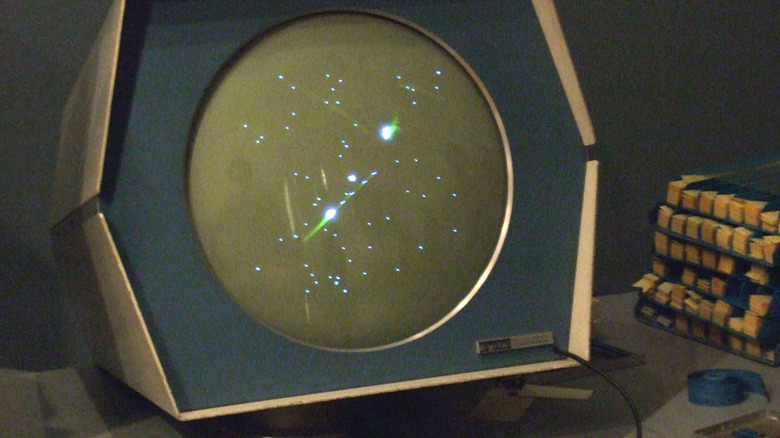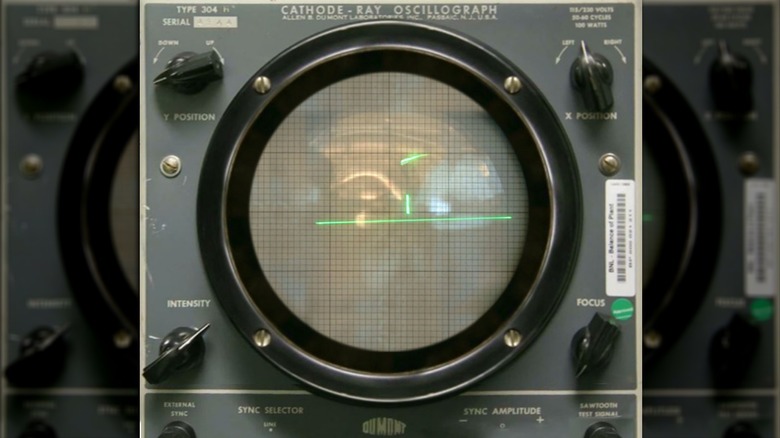What Was Really The First Video Game Ever Invented?
If you were to ask people what the oldest video game is, you'd probably get a range of responses. Super Mario Bros? Nope; that one's from 1985 (per Britannica). Tetris? Not quite; according to its website, that's from 1984. Pac-Man, perhaps? Closer; that one (according to its own website) was released in 1980.
At this point, exasperated video game enthusiasts might be tempted to scream "It's obviously Pong!" And Pong, released by the video game company Atari in 1972, is a good guess. The tennis-inspired game involves two players bouncing a white ball back and forth between two rectangular, white paddles. But you probably already knew that; Pong is one of the most iconic games in history.
As the Strong National Museum of Play points out, Pong was indeed the first game to "[bring] video games to the public consciousness in a widespread way." But, the museum adds, Pong was definitely not the first video game. In fact, it wasn't even the first game produced by Atari's founder Nolan Bushnell. That honor goes to Computer Space, a game about two dueling spaceships, which Bushnell had released a year earlier.
Then what is the first video game? It turns out that it's a fairly difficult question to answer, as it depends on your definition of "video game." Even so, there are definitely some clear candidates for the first video game in history.
MIT's Spacewar! was the first video game to run on a digital computer
A decade before Atari released Pong, the Massachusetts Institute of Technology (MIT) produced a different computer game. As Smithsonian Magazine reports, that game was called Spacewar!, and it was created in 1962. Spacewar! was developed by a group of MIT students, led by Steve Russell, on MIT's newly-acquired PDP-1 computer. The game involved two spaceships engaged in an interstellar battle. (If that sounds familiar, that's because Spacewar! inspired Nolan Bushnell's Computer Space.) Spacewar! quickly became a sensation at MIT, then at other computer-equipped universities and labs across the country.
Per the Strong National Museum of Play, Spacewar! was likely the first game to use a digital computer to simulate moving images on a screen. If that's your definition of "video game," then it's safe to say that Spacewar! was the first video game. However, if you extend that definition to include analog computers — computers that display images using beams from cathode-ray tubes, as opposed to rendering images as a series of pixels — then Spacewar! was certainly not the first. That honor probably belongs to Tennis for Two.
Tennis for Two was developed at Brookhaven National Laboratory — a lab for energy research funded by the U.S. Department of Energy. That may come as a surprise; Brookhaven is a pretty formal institution, and doesn't sound like the kind of place that you'd expect to play a key role in jumpstarting the video game industry.
The earliest video game may have been developed at a federally-funded laboratory
Nevertheless, in 1958, one Brookhaven scientist, William Higinbotham, developed what is arguably the first-ever video game. Per Brookhaven's website, the game was cobbled together from a few pieces of electronic equipment. Its "brain" was a small analog computer and it displayed images using an oscilloscope for a screen. (An oscilloscope, Tek.com writes, is a device that translates changes in electrical voltage into moving, waveform images on a screen.)
Higinbotham's game was called Tennis for Two. As the name suggests, Tennis for Two was very similar to 1972's Pong — though Tennis for Two's gameplay was slightly more like actual tennis, while Pong is more akin to air hockey. (Either way, early video game developers seemed to love tennis and space battles.) Higinbotham built Tennis for Two to get the public more engaged with science, and he succeeded. According to Brookhaven's site, "hundreds of visitors lined up for a chance to play the electronic tennis game."
Unfortunately, if we allow the definition of "video game" to include analog computers, Tennis for Two has a few predecessors that we'd also have to consider, including an electronic version of Tic Tac Toe from 1952. But Brookhaven argues that these earlier games weren't really "games" at all; they were built to demonstrate the power of new computers, not for the sake of fun, and they generally had far more basic visual displays than Tennis for Two. So, rather than spiraling deeper into history, we'll leave off at Brookhaven.


